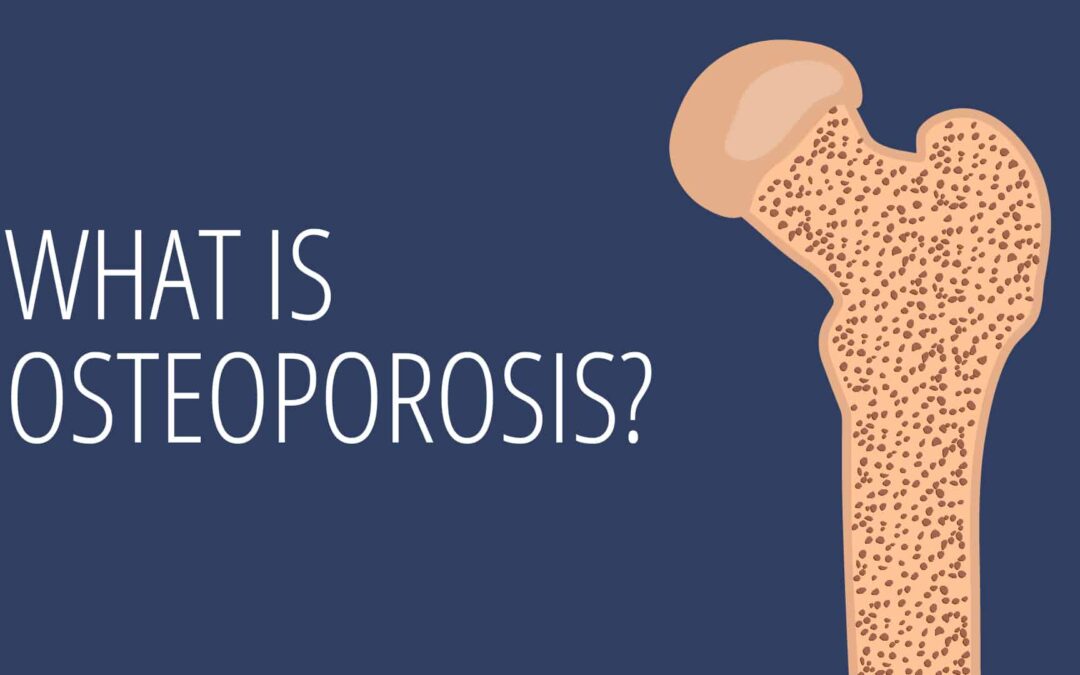What Is Osteoporosis?
Osteoporosis causes bones to become weak and brittle. The word osteoporosis means “porous bone.” The condition is the most common bone disease, and is most commonly found in older adults, people assigned female at birth, and people of Caucasian descent.
Healthy bones have a structure that is similar to a honeycomb, which has small holes. In people with osteoporosis, the holes and spaces that make up bones are significantly larger. This loss of bone density and mass leads to the weakening of the bones.
Osteoporosis can be primary and secondary. Primary osteoporosis is the most common form of osteoporosis and occurs as part of aging, while secondary osteoporosis is brought on by other conditions.
Osteoporosis leads to weak and brittle bones and an increased risk of bone fractures. Aging can lead to osteoporosis, but other conditions can also cause a person to develop it.
Although everyone is at risk of developing osteoporosis over time, some factors can increase your risk of having the condition, including:
- Sex: People assigned female at birth are more likely than people assigned male at birth to develop the disease. Those who are postmenopausal are at even higher risk.
- Hypogonadism: In people assigned male at birth, hypogonadism causes the body to produce less than adequate amounts of hormones that drive growth and development during puberty.
- Premature ovarian failure: This condition occurs when people assigned female at birth’s ovaries stop functioning properly before the age of 40. There is not enough of the hormone estrogen and eggs are not released from the ovaries regularly.
- Low weight: Being underweight can lead to osteoporosis.
- Low bone mass: Having a low bone mass or density means that your bones are not as dense or strong as they should be.
- Nutritional deficiencies: Vitamin D and calcium play a role in the health of bones, and if a person doesn’t get enough of either for a long period of time, they are at higher risk of osteoporosis.
- Hyperkyphosis: This is a curve in the spine that is greater than it should be.
- Smoking and alcohol use: Smoking can lead to osteoporosis because it reduces blood supply to the bones and can affect the body’s ability to produce hormones that play a role in bone health. Excessive alcohol intake has been shown to decrease bone density and weaken bones.
- Long-term use of some medications: Anti-inflammatory drugs such as corticosteroids can increase the risk of osteoporosis in the long term. Blood thinners, anti-seizure medications, chemotherapy drugs, and medications designed to stop the production of estrogen can also increase that risk.
- Health conditions: Some health conditions such as celiac disease or multiple myeloma have been shown to increase the risk of osteoporosis. An overactive thyroid or adrenal glands may also play a role in its development.
- Sleep quality: Research has shown that not getting enough sleep throughout one’s life may increase the risk of developing osteoporosis.
Everyone is at risk of developing osteoporosis as they age. However, there are some lifestyle changes you can make that can decrease your chances of developing osteoporosis.
How to Prevent Osteoporosis
In some cases, osteoporosis can be prevented with the right lifestyle changes.
Eat a Healthy Diet
Eating a diet rich in nutrients and vitamins can help keep your bones strong and healthy. A diet that includes protein, calcium, and vitamins D, C, and K can reduce your risk of developing osteoporosis.
Foods that are highest in calcium are dairy products, including milk, yogurt, and cheese. For people who do not eat dairy products, other good sources of calcium include kale, dried figs, broccoli, and calcium-fortified juices and breads.
The best source of vitamin D is the sun, but the nutrient can also be found in oily fish such as sardines, herring, and salmon. Red meat, liver, and egg yolks are also great sources of vitamin D. For people who don’t eat meat, fortified soy milk, mushrooms, and fortified cereals are great options.
Take Vitamins
In the event that your diet does not fulfill your nutrition needs, especially for vitamin D and calcium, it is recommended that you take supplements.
Adults assigned male at birth need roughly 1,000 milligrams (mg) of calcium and between 400 and 1,000 international units (IU) of vitamin D daily. Adults assigned female at birth need the same amount of vitamin D, but their calcium intake should be at 1,000 mg to 1,200 mg per day.
Exercise More
Research has shown that having a regular exercise routine can help prevent bone density loss and osteoporosis. That means that you should include cardio or aerobic exercises, weights, and muscle-building exercises, and low-impact exercises such as yoga, in your routine.
Summary
Osteoporosis can happen to anyone. Aging, genetics, and overall health can play a role in whether you develop this condition. If you believe you are at a higher risk of developing osteoporosis, you can begin prevention strategies such as eating a healthy diet, getting enough calcium and vitamin D, and exercising regularly.
Having osteoporosis puts you at a greater risk of fractures as you get older. Although it is not completely unavoidable, there are ways you can lower your risk of developing osteoporosis and take care of your bones as early in your life as possible.
The best time to start preventing bone density loss and decreasing your risk of bone disease is now, regardless of how old you are. Bone health is an important part of your overall health and taking care of yours now will ensure that your bones stay healthy as you get older.
Source: Osteoporosis: Overview and More (verywellhealth.com)






